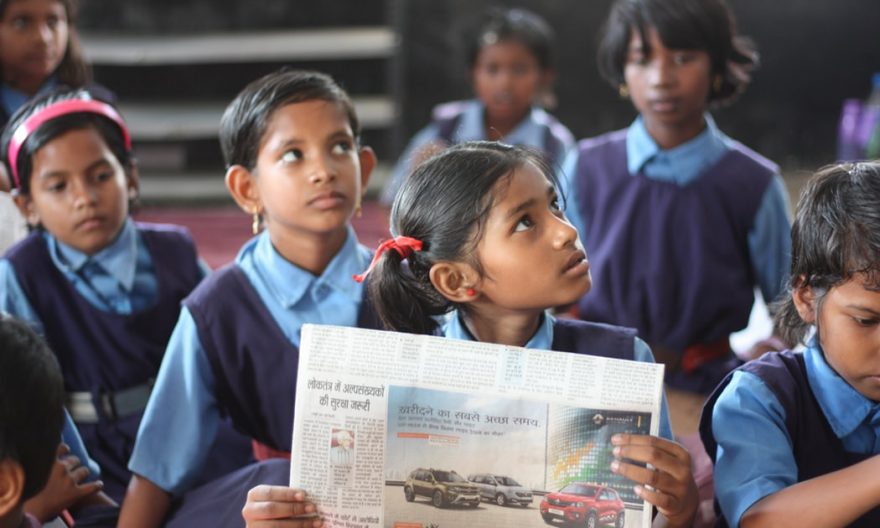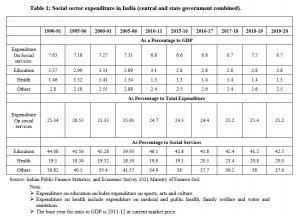
The idea of human development emerged from the concern among development practitioners about the prominence enjoyed by economic growth measures such as the gross domestic product. The UNDP defines human development as the process of enlarging people’s choices. “The most critical of these choices are to live a long and healthy life, to be educated, and to have access to resources needed for a decent standard of living. Additional choices include political freedom, guaranteed human rights and personal self-respect”.
Human development enables people to have these choices that are beyond the measurement matrix of GDP which is considered as one of the greatest inventions of the twentieth century by none other than Paul Samuelson. Economic progress has been determining the speed, composition and quantity of development through the eyes of Clarke, Kuznets, Stone, Keynes and Galbraith via production, income and output which has its roots in William Petty’s political arithmetic and Adam Smith’s notion of invisible hand.
Amartya Sen and Mahbub Ul Haq’s vision of development goes beyond income wherein “people are the real wealth of nations” and income is a means but not an end. Ever since the advent of human development reports 32 years ago, UNDP has been guided by their messages and meanings, taking on richer hues over time.
READ I Ecolabelling, public procurement support key to achieving SDG 12
The human development index
UNDP developed an index, popularly called Human Development Index (HDI), which is a summary measure for assessing long-term progress in three basic dimensions of human life: a long and healthy life; access to knowledge; and, a decent standard of living. To capture these three dimensions, four indicators are used; life expectancy at birth; adult literacy rate; combined gross enrolment for primary, secondary and tertiary education; and GDP per capita in dollars adjusted by purchasing power parity.
The UNDP released HDR 2021-22 early this month which reveals that the global HDI value decreased for the first time, bringing the globe back to a point immediately after the adoption of the 2030 Agenda for Sustainable Development and the Paris Agreement. Several countries endured annual declines in their respective HDI values. In 2020 or 2021, however, a startling 90% of countries suffered a decline in their HDI value, vastly outnumbering the percentage that saw declines in the wake of the global financial crisis (20%).
As per the latest available data, India’s HDI value for 2021 is 0.633 (lower than world average 0.732 and marginally higher than South Asia (0.632) — which puts India in the medium human development category—positioning it at 132 (6th in South Asia out of 9 countries) out of 191 countries and territories.
Between 1990 and 2021, India’s HDI value changed from 0.434 to 0.633, a change of 45.9%. In the same time period India’s life expectancy at birth increased by 8.6 years, mean years of schooling rose by 3.9 years and expected years of schooling increased by 3.9 years. The country’s GNI per capita witnessed 268.1% rise between 1990 and 2021.
India’s ranking is reflecting the overall situations of quality of life of people of India vis-à-vis the rest of the world. Empowering the deprived classes through access to education and health is one of the most noted initiatives for the overall development of people and the country at large.
This can be done by policy intervention using public expenditure on social and community services which consists of expenditure on; education, arts and culture; research and scientific services; water supply and sanitation; medical care and health services; housing, family welfare; urban development; labour and employment; social security and welfare. Health and education dimensions significantly explain the changes in the overall status of quality of life of people.

Over the last 30 years, out of the total social service expenditures, major chunk of funds went for education (which also include sports, arts and culture) and health. Over 40% of total social service expenditure made for education and around 20% of the expenditure made for heath. The proportion of expenditure has remained same over the last 30 years. In past half a decade, expenditure on social services has increased from 24.7% to 25.2% of total budgetary expenditure.
Even during the pandemic, the government’s spending on social services increased significantly. In 2021-22 budget estimate, (BE), Union and state governments earmarked an aggregate of Rs 71.61 lakh crore for spending on social service sector; an increase of 9.8% over 2020-21. The revised expenditure for 2020-21 has also gone up by Rs 54,000 crore from the budgeted amount. In 2021-22 (BE), funds to the sector increased to 8.6% of the GDP (8.3% in 2020-21).
During the last five years, social services accounted for about 25% of the total government expenditure (Centre and states taken together). In 2021-22 (BE), it was 26.6% (MoF, GoI., 2022). Although, the pandemic has affected almost all social services, yet the health sector was the worst hit. Expenditure on health sector increased from Rs 2.73 lakh crore in 2019-20 (pre-Covid-19) to Rs 4.72 lakh crore in 2021-22 (BE), an increase of nearly 73%. For the education sector, the increase during same period was 20 percent (MoF, GoI. 2022).
Over the next decades, India shall have the highest young population in the world, so the future of the country will be determined by the quality and magnitude of educational opportunities for this young population. Over time, the progress in school and higher education infrastructure has notably increased in India. Not only this, the physical infrastructure of more than 9.72 lakh government schools (both primary and upper primary called elementary schools) has significantly improved.
Scaling up investment in research and development, nurturing human capital and capabilities, and the overall education sector to the maximum possible level is a pertinent subject matter of the third decade of the 21st century. However, India’s efforts in this direction are not satisfactory. Since the year 2000, India’s expenditure on research and development to GDP has virtually remained stagnant in the range of 0.73%-0.87% which is lower than all countries in the BRICS group and less than one-third of the US (2.74%) and Europe (1.85%).
Even the spending on education has remained stagnant over the last many years. The economic survey 2020-21 reported that spending on education remained at 2.8% of GDP during 2014-19 and increased to 3-3.5% in the 2019-20 period. Although, several committees including committee on NEP have called for 6% of the GDP.
As a result, around 74% of India’s young population between ages of 18 and 23 years have not yet enrolled in higher education. Its catastrophic consequences are very much reflective in leading indications of the quality and composition of human life.
In the latest Human Capital Index (HCI), India stands at 116 out of 174 countries; 132nd out of 191 countries in the human development index (HDI) and 46th in the list of top 50 innovating counties in The Global innovation index. HCI index score is even less than the average score of South Asia, and the HDI index score is marginally higher than the average score of South Asia but far less than the world average. The performance on these indicators demands for serious policy interventions times to come.
Policy interventions
Seeing the disparity in education and health dimension between the rich and poor, urban and rural populations; public spending becomes necessary to bridge these gaps and to ensure good quality of life among citizens. Merely spending money without adequately and judiciously monitoring does not serve the purpose.
It is evident that social services, even though highly subsidised, may still be out of reach for the poor because the component of private costs (transportation, books, medicine, etc.) may be prohibitively high. For example, some of the best and most heavily subsidised higher educational institutions such as IITs, IIMs, Central Universities, IISC, IIITs, AIIMS, and others are located in tier one and tier two cities where living costs are prohibitively expensive for middle and lower-middle-class families.
“Among public universities, only three percent students attend central universities,” (MHRD 2019). According to the same report (MHRD 2019), central universities and premier institutes such as IITs and IIMs receive 57.50% of government higher education funding. Therefore, an attempt to create social infrastructure via public spending on the social sector must ensure that it should reach the targeted population.
It is heartening to note the appreciable jump in last 3 decades when it comes to HDI values. However, these improvements have been much better in other countries. We are running fast but we need to learn to run faster than others and in the process of drafting strategies for running faster we need to be steady and sustainable. The time of the pandemic has taught the world the importance of human development. There is hope that the lessons will resonate in actions and India will grow faster, in terms of health and otherwise.
(VK Shrotryia is Senior Professor, Department of Commerce, Delhi School of Economics. Shashank Vikram Pratap Singh is Assistant Professor, Shri Ram College of Commerce. The authors acknowledge the contribution of Happlab.)

